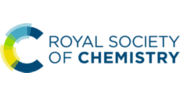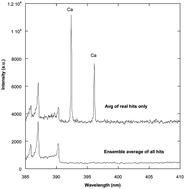In a recent issue of JAAS we highlighted work from around the world in the field of archaeometry. Also known as archaeological science, it is the use of scientific techniques to analyze archaeological materials, such as bone, ceramics, glass, and bronze.
The themed issue was guest edited by Patrick Degryse, from the University of Leuven (KU Leuven), Leuven, Belgium and the issue contained some exciting papers on topics including Roman glass, human teeth, medieval village populations, and metallurgy in China. Click through here to take a look at the issue or read about it in the blog. The below papers will be free to access for 2 weeks.
Some HOT papers from this themed issue include;

Monica Ganio, Sara Boyen, Thomas Fenn, Rebecca Scott, Sofie Vanhoutte, Domingo Gimeno and Patrick Degryse
J. Anal. At. Spectrom., 2012, 27, 743-753
DOI: 10.1039/C2JA10355A
A summary of strontium and oxygen isotope variation in archaeological human tooth enamel excavated from Britain
J. A. Evans, C. A. Chenery and J. Montgomery
J. Anal. At. Spectrom., 2012, 27, 754-764
DOI: 10.1039/C2JA10362A
Here in JAAS we have published many papers on the topic of archaeometry in the past. Take a look at a few selected papers listed below. If you have a paper you are looking to publish in this field, why not try submitting to JAAS.
Open ablation cell for LA-ICP-MS investigations of historic objects
Barbara Wagner and Wojciech Jędral
J. Anal. At. Spectrom., 2011, 26, 2058-2063
DOI: 10.1039/C1JA10137D
Micro and Surface Analysis in Art and Archaeology
F. Adams, A. Adriaens, A. Aerts, I. De Raedt, K. Janssens and O. Schalm
J. Anal. At. Spectrom., 1997, 12, 257-265
DOI: 10.1039/A606091I
Application of laser ablation inductively coupled plasma mass spectrometry (LA-ICP-MS) for the investigation of ancient silver coins
Guillaume Sarah, Bernard Gratuze and Jean-Noël Barrandon
J. Anal. At. Spectrom., 2007, 22, 1163-1167
DOI: 10.1039/B704879C

G. A. Zachariadis, A. N. Anthemidis and J. A. Stratis
J. Anal. At. Spectrom., 2003, 18, 358-366
DOI: 10.1039/B301098H
Synchrotron radiation and cultural heritage: combined XANES/XRF study at Mn K-edge of blue, grey or black coloured palaeontological and archaeological bone material
Ina Reiche and Emilie Chalmin
J. Anal. At. Spectrom., 2008, 23, 799-806
DOI: 10.1039/B717442J
A study on gold and copper provenance for Romanian prehistoric objects using micro-SR XRF
Bogdan Constantinescu, Angela Vasilescu, Martin Radtke and Uwe Reinholz
J. Anal. At. Spectrom., 2011, 26, 917-921
DOI: 10.1039/C0JA00215A
Synchrotron radiation and laboratory micro X-ray computed tomography—useful tools for the material identification of prehistoric objects made of ivory, bone or antler
I. Reiche, K. Müller, A. Staude, J. Goebbels and H. Riesemeier
J. Anal. At. Spectrom., 2011, 26, 1802-1812
DOI: 10.1039/C0JA00246A

I. Szalóki, M. Braun and R. Van Grieken
J. Anal. At. Spectrom., 2000, 15, 843-850
DOI: 10.1039/B000746N
Integrated X-ray and neutron-based analysis of bronze artefacts from the Ligurian settlement of Guardamonte-Monte Vallassa
Roberta Cattaneo, Cristina Chiaramonte Trerè, Lucia Mordeglia, Giuseppe Gorini, Enrico Perelli Cippo, Laura Bartoli, Winfried Kockelmann and Antonella Scherillo
J. Anal. At. Spectrom., 2011, 26, 1024-1029
DOI: 10.1039/C0JA00259C
Development of a new method for Pb isotopic analysis of archaeological artefacts using single-collector ICP-dynamic reaction cell-MS
David De Muynck, Christophe Cloquet and Frank Vanhaecke
J. Anal. At. Spectrom., 2008, 23, 62-71
DOI: 10.1039/B709461B





















